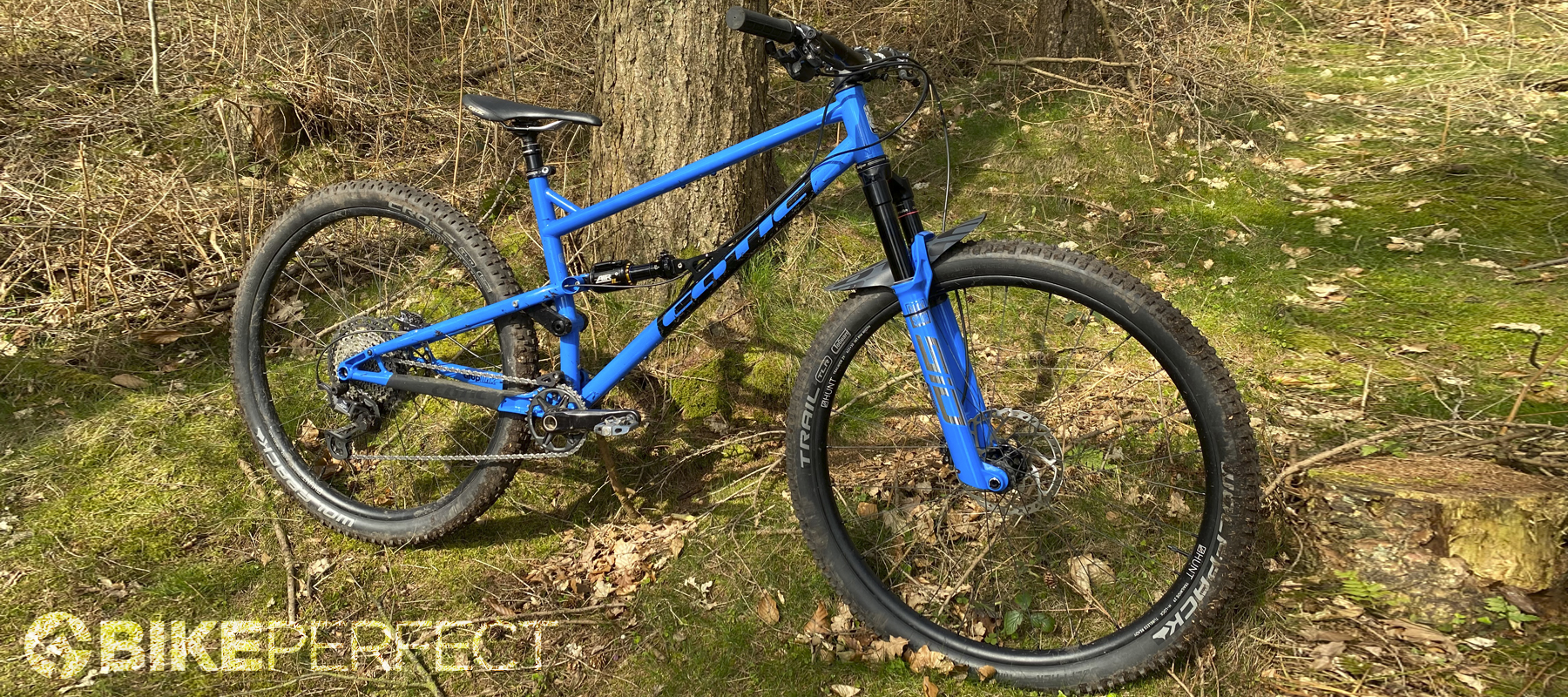Bike Perfect Verdict
This steel shredder can still keep up with full-carbon down-country machines and is built with a solid specs list
Pros
- +
Communicative steel frame
- +
Super-light unsprung weight and components
- +
Adjustable, linear shock
- +
Progressive geometry
- +
Unique charm and x-factor aesthetics
Cons
- -
Heavier than rivals
- -
Lacks the stiffness of a carbon-fiber monocoque
- -
Expensive
Why trust BikePerfect
Cotic’s latest evolution of its short-travel FlareMAX takes cues from the mid-travel Jeht, as well as super-light spec options inspired by a project bike built by our own tech writer, Guy Kesteven.
Design and geometry
Construction is unchanged on the bike, with a custom ovalform and oversized seat tube set of Reynolds 853 heat-strengthened, butted steel tubes forming the front end. The rear end uses alloy chainstays with steel seat stays. The first G4 front ends will be made by Five Land bikes in Scotland though before general production reverts to a cheaper Taiwanese front end.
Cotic’s benchmark-setting ‘Longshot’ geometry was originally designed to work with 130-140mm forks but this build is based on a 120mm SID Ultimate fork. That gives a 495mm reach on the large, with a 66-degree head angle and 76-degree seat angle with a -34mm BB drop and 447mm chainstay.
In a move copied from the 140mm travel Jeht, the ‘DropLink' linkage is longer and sits lower on the seat tube. That doesn’t affect the 125mm of travel, but it does let Cotic use a metric-sized 200x50mm shock with a more consistent (and naturally lower) compression ratio. This allows more adjustment for lighter pilots or riders who want a more linear feel, as they can just remove the two-volume spacers the Cane Creek DBAir is fitted with as standard.
Dropping the link in the frame also gives more room for seat post insertion (248mm max on the large) so you can choose an even longer frame than you would normally for a given saddle height.
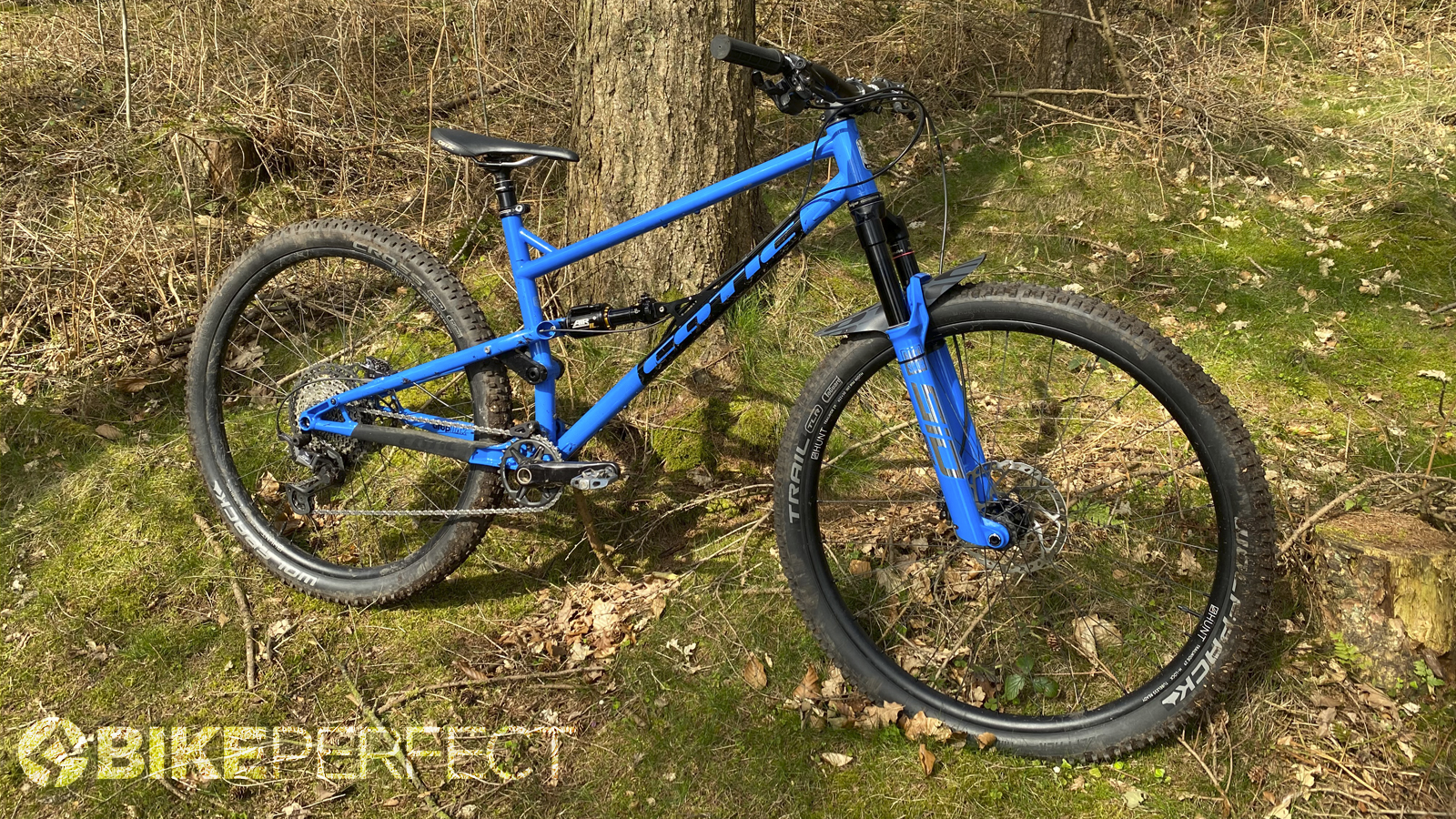

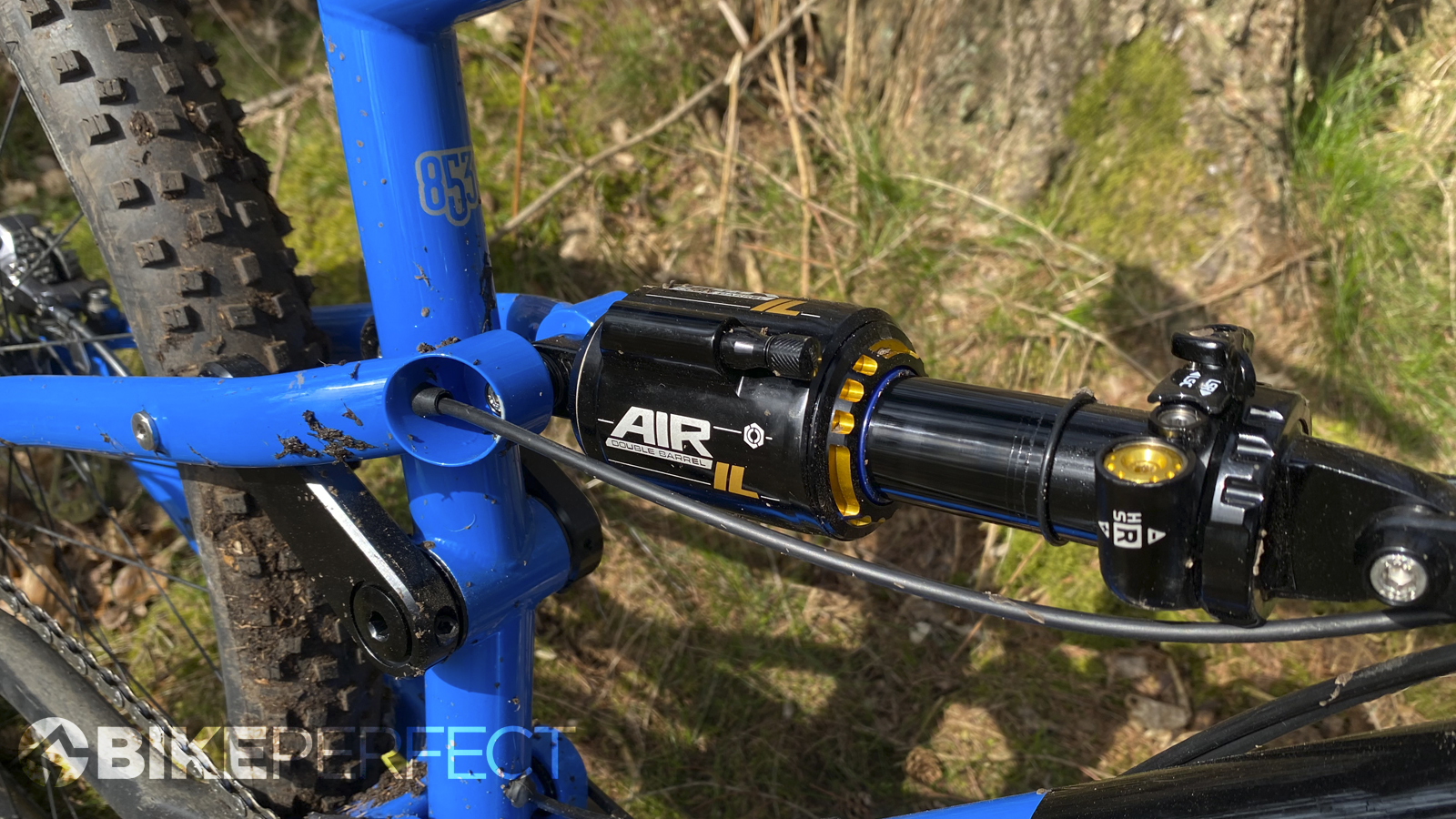
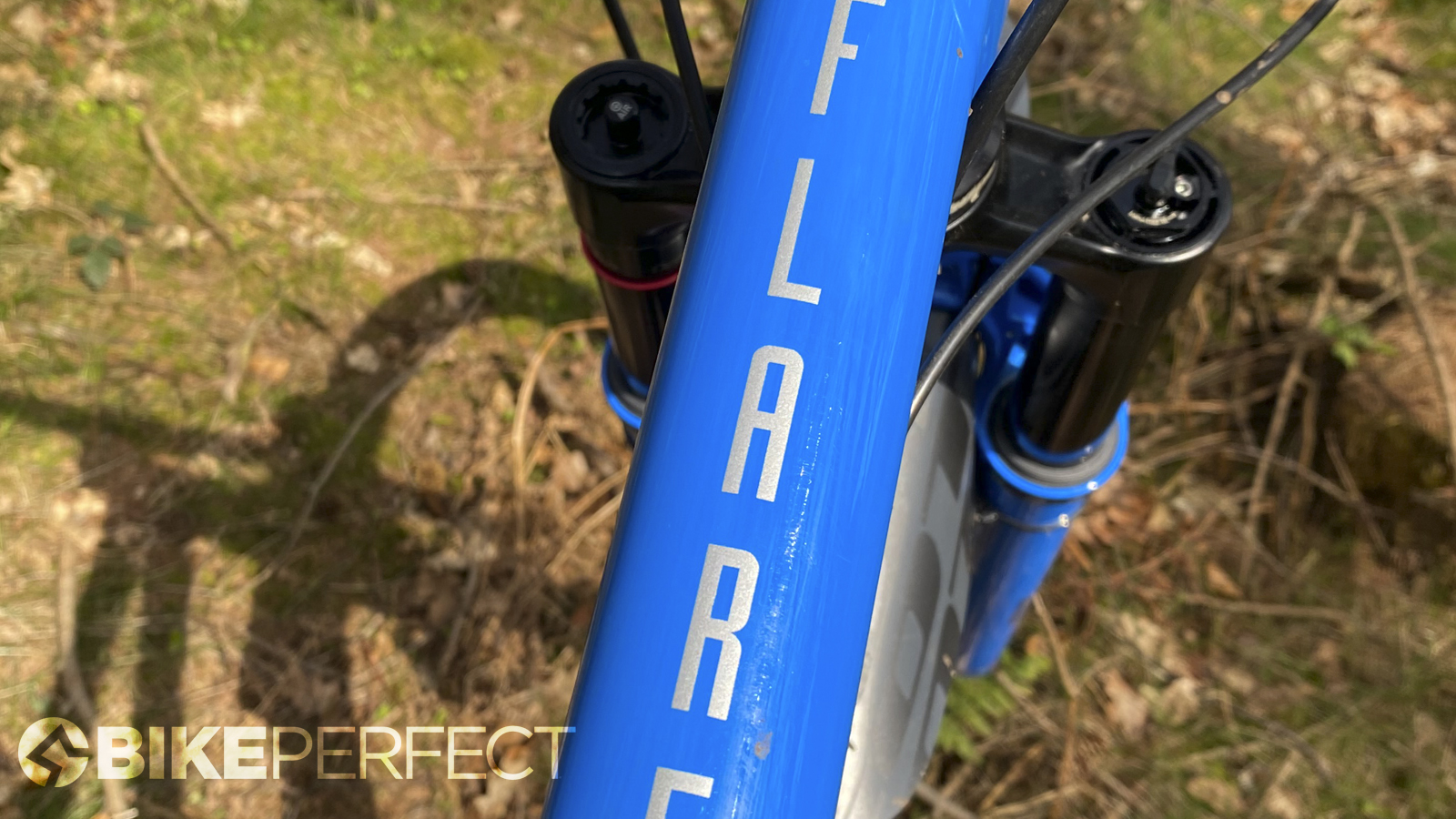
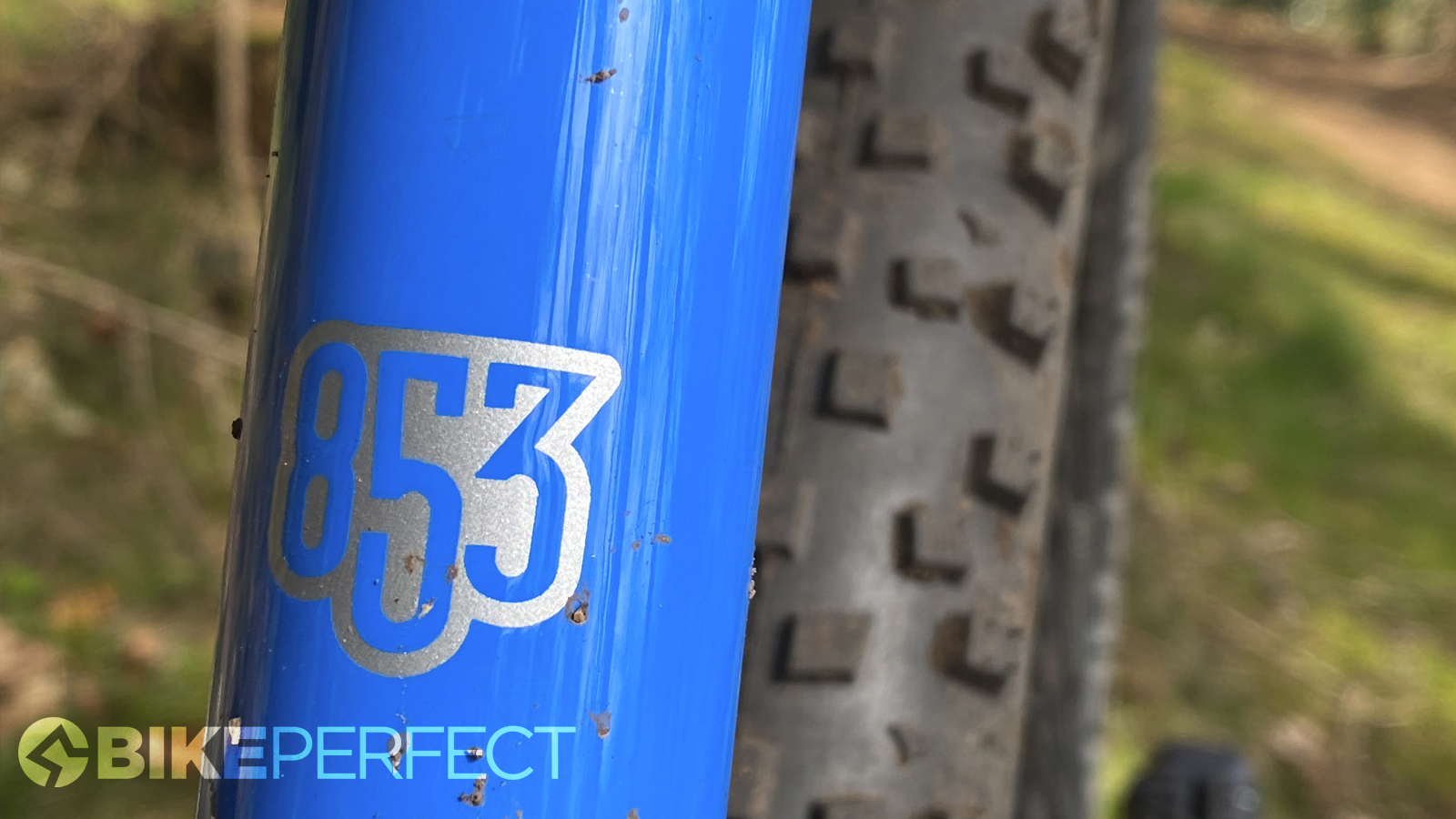

Components and build
Also as per usual Cotic offers a series of builds, mostly around a 130mm Cane Creek Helm fork and mid-weight WTB wheels with various Shimano or SRAM stop and go options, as well as Hope upgrades. The build we rode is a little different though and inspired by our own Bike Perfect tech writer, Guy Kesteven, who built up a ‘down-country’ FlareMAX as an experiment during the first lockdown. That includes super light 35mm legged RockShox SID SL forks and light, fast-rolling Wolfpack tires on either Hunt XC Wide or Trail Wide (tested here) wheels. That brings the complete bike weight in just under 13kg despite the 4kg frame.
Ride, handling and performance
The nimble weight makes a big difference to the ride character beyond just having less mass to accelerate or drag up climbs. Light, fast-rolling wheels give it a real pop and while you can definitely feel the front end twist if you wrestle the wide bars on climbs, the alloy swingarm is impressively stiff when it comes to transferring power. Kicking hard on climbs on a steel bike also has a surprise shock value that shouldn’t be underestimated in terms of psychological warfare on group rides with carbon and alloy biked mates.
As the lost weight is nearly all in the unsprung parts of the bike (wheels, tires, lower fork legs) that speeds up suspension responsiveness and makes the bike easier to chuck around dynamically. Given that the frame already has a lot of natural spring and pop, that makes this Down-country version properly giddy when it comes to skipping and whipping along the trail. The natural flow and compliance of the frame and wheels (especially if you opt for the XC Wide, which we’d really recommend to flatter the fork and tires) also adds smoothness and traction to the solidly controlled rather than super supple Cane Creek DBAir shock. Factor in the steep seat angle and while the tread on the Wolfpack Cross tire is shallow, the FlareMAX gets a lot of grip to charge climbs and the lightweight carcass is less likely to get damaged than with a rock-solid frame, too.
The oval top tube and 35mm stanchions on the impeccably controlled SID Ultimate fork are still taut enough to make good use of the relatively slack head angle and long reach of the Longshot geometry. That’s not to say that the front wheel doesn’t shimmy on the edge of control if you’re really pushing hard, but you rarely have to rein in your aggro ambitions even on seriously rocky and rooty trails.
Verdict
Building a super-light down-country bike around a 4kg semi-steel frame is clearly a silly thing to do on paper when you can get carbon frames with similar travel for around half the weight. Some of them will be stiffer, too, so from a pure efficiency point of view, there are clearly better choices. If you’re after dynamic feel and fatigue-reducing flow, that steel frame is absolutely worth the extra weight though. Add the progressive geometry, sorted suspension, and super responsive spec and the end result is an infectiously lively and insolent attitude to the trail that’ll engage some riders way more than anything that comes out of a mold. The Gen 4 tweaks also open up sweet spot setups to more sizes and weights of riders so even more people can experience one of our favorite ways to make every meter of singletrack come alive.
Tech Specs: Cotic FlareMAX Gen 4 Down-country Gold
- Model name: Cotic FlareMAX Gen4 Down-country Gold spec
- Discipline: Downcountry
- Price: £4,699
- Head angle: 66-degrees
- Frame material: Custom Reynolds 853 steel mainframe and seat stays, 6061 alloy chainstays.
- Size: Large
- Weight: 12.9kg
- Wheel size: 29in
- Suspension (front/rear): RockShox SID Ultimate/Cane Creek DBAir
- Components: Shimano XT drivetrain and Deore M1600 brakes with 180mm rotors, Hunt Trail Wide 29 wheels with Wolfpack Trail/Cross 29x2.4in tires. Bike Yoke Devine seat post, Cotic saddle, Shorter 35mm stem and Calver 780mm bars.
Test conditions
- Temperature: 10-14 degrees, sunny overcast.
- Trail surfaces: Loamy, rooty, rocky, natural and bike park trails
- Routes: Natural down country, old school DH and red and black rocky bike park

Guy Kesteven has been working on Bike Perfect since its launch in 2019. He started writing and testing for bike mags in 1996. Since then he’s written several million words about several thousand test bikes and a ridiculous amount of riding gear. He’s also penned a handful of bike-related books and he reviews MTBs over on YouTube.
Current rides: Cervelo ZFS-5, Specialized Chisel, custom Nicolai enduro tandem, Landescape/Swallow custom gravel tandem
Height: 180cm
Weight: 69kg
